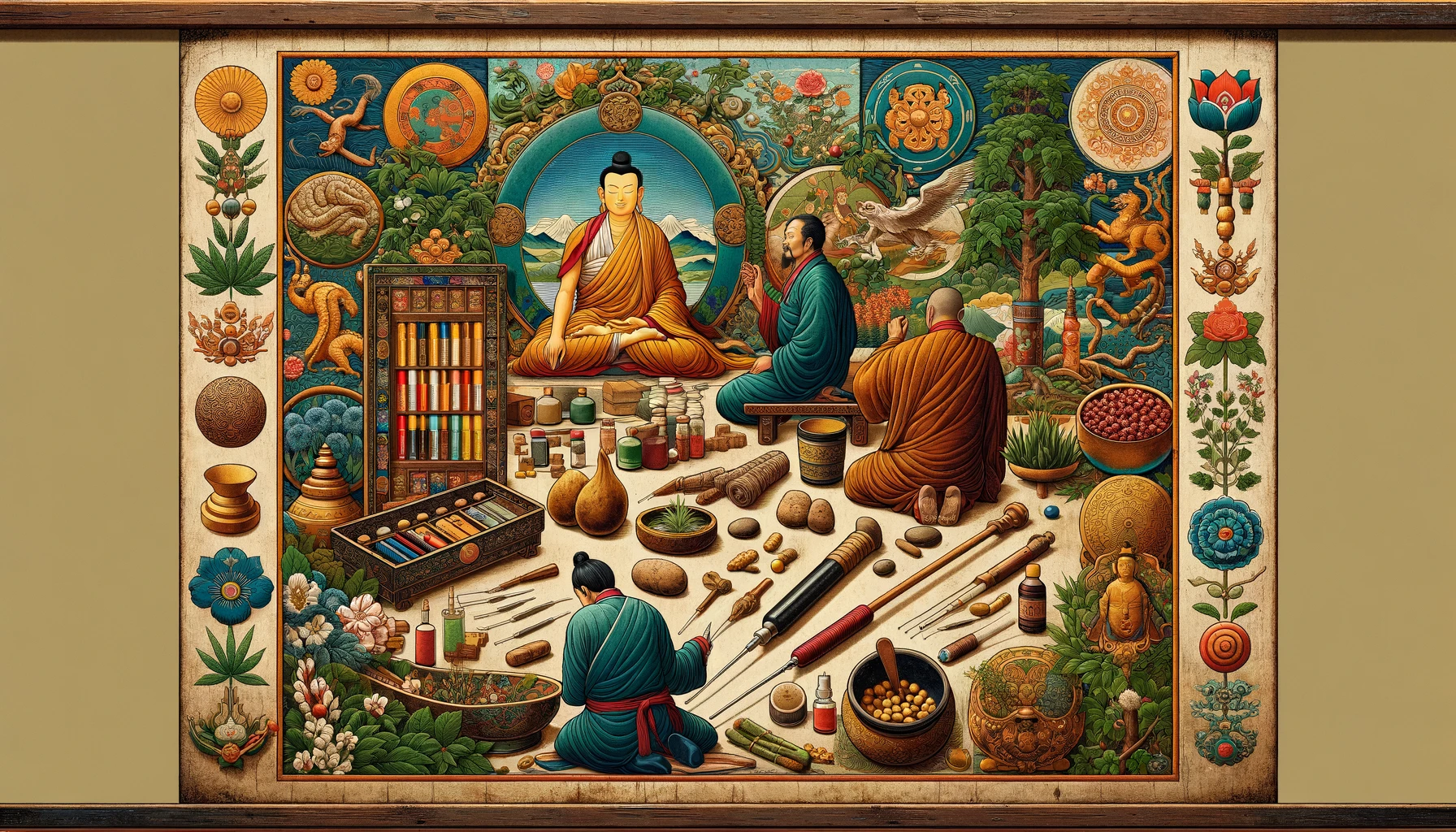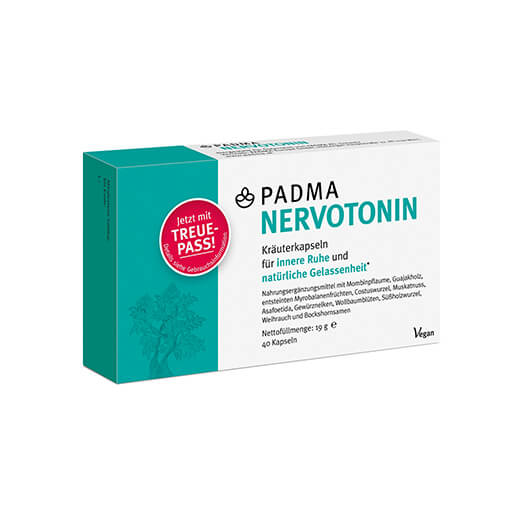Tibet and Tibetan medicine: characteristics and modern perspective
Tibetan medicine, also known as Sowa Rigpa or the "science of healing," is a holistic medical system with a history of over 2,500 years. This system integrates philosophy, psychology, astrology, and the art of healing to understand and treat the human being on all levels.
This article will explore the unique characteristics of Tibet, the features of Tibetan medicine, its historical development, modern perspective, and the role of Padma products in popularizing Tibetan medicine.
The uniqueness of Tibet
Geographical features
- High altitude: Tibet is the highest region in the world, with the tallest peak, Mount Everest (8,848 meters).
- Climate: Cold winters and cool summers, with low oxygen levels due to altitude, and intense solar radiation.
- Ecosystems: From snow-capped mountains and glaciers to high-altitude meadows and rivers that feed Asia's major river basins.
History and culture
- Ancient civilization: Tibetan history begins with ancient kingdoms that united the region.
- Religion: Buddhism arrived in Tibet in the 7th century, becoming the dominant religion and shaping a unique form of Tibetan Buddhism.
- Monasteries: These became spiritual and cultural centers, preserving literature, art, and science.
- Language and script: Tibetan is part of the Sino-Tibetan language family and has its unique script, created to preserve Buddhist texts.
Spiritual heritage
- Dalai Lama: The spiritual leader of Tibetan Buddhism, considered the incarnation of Avalokiteshvara, the bodhisattva of compassion.
- Meditation and spiritual practices: These are part of daily life, aimed at achieving enlightenment and inner peace.
- Arts and crafts: Tibetan art is closely linked to religion, including thangka painting, mandala creation, and ritual dances.
Lifestyle
- Nomads and pastoralism: Many Tibetans are traditional livestock herders, raising yaks and sheep in high-altitude pastures.
- Diet: Main foods include yak butter, barley (tsampa), meat, and butter tea.
- Traditions and festivals: Festivals like Losar (Tibetan New Year) and Monlam (Prayer Festival) reflect the importance of culture and spiritual life.
Historical development
Origins and influence
Tibetan medicine developed over centuries, absorbing elements from various cultures and traditions. It was influenced by:
- Ayurveda from India, which introduced concepts of energy channels and doshas.
- Traditional chinese medicine, which contributed knowledge about acupuncture and energy meridians.
- Greek-arabic medicine, which brought ideas of humoral medicine through the Silk Road.
These diverse influences were synthesized into a unique system reflecting the cultural and geographical context of Tibet.

"Gyud-Zhi" – the four tantras
The primary text of Tibetan medicine is the Gyud-Zhi or the "Four Tantras." This text, attributed to Yuthok Yonten Gonpo (708–833 AD), is a comprehensive guide covering medical philosophy, diagnostic methods, pharmacology, and therapies. The Gyud-Zhi is structured as follows:
- Root tantra: Outlines the core theories and concepts of medicine.
- Explanatory tantra: Provides detailed explanations of physiology and pathology.
- Oral tantra: Describes diagnostic and therapeutic methods.
- Final tantra: Focuses on more complex therapies and practical instructions.
Philosophical foundations
Worldview and holism
Tibetan medicine is rooted in Buddhist philosophy, particularly the Mahayana and Vajrayana traditions. It views the human being as part of a microcosm where body, mind, and spirit are inseparable. Health is considered to be the harmony between these aspects, while illness results from disharmony.
Five elements and three humors
Key concepts in Tibetan medicine include the five elements (earth, water, fire, wind, and space) and the three humors:
- Lung (Wind): Associated with movement, respiration, and the nervous system.
- Tripa (Bile): Governs metabolism, digestion, and body heat.
- Beken (Phlegm): Regulates stability, moisture, and the immune system.
Balancing these humors is essential for health. Each person’s constitution is unique, with dominant humors that determine their physical and psychological characteristics.
Diagnostic methods
Diagnosis in Tibetan medicine is an art requiring great skill and intuition from the physician. The main methods include:
Pulse diagnosis
- Pulse reading: Using a three-finger technique, the physician checks the pulse on both hands to determine the condition of internal organs and the balance of humors.
- Pulse qualities: Speed, rhythm, strength, and other aspects provide information about the state of health.
Urine analysis
- Urine examination: The color, smell, sediment, and bubbles of the urine are analyzed.
- Timing: Urine is collected in the morning, after fasting, to provide the most accurate reflection of the internal condition.
Interview and observation
- History taking: A detailed discussion about symptoms, lifestyle, diet, and emotional state.
- Physical examination: Observation of the tongue, eyes, skin, and other body parts.
Treatment methods
Tibetan medical therapies are holistic and individualized, aiming to restore the balance of the humors.
Herbal therapy
- Pharmacology: Over 2,000 plants, minerals, and animal substances are used.
- Medicine preparation: Complex methods, including drying, roasting, and powder-making.
- Formulas: Prescriptions are tailored to the patient's constitution and nature of the illness.
Nutritional therapy
- Diet correction: Recommendations on foods that match the patient's humoral imbalance.
- Seasonal advice: Diet is adjusted according to the seasons and environmental conditions.
Lifestyle changes
- Behavioral advice: Suggestions regarding sleep, physical activity, and daily routines.
- Psychological support: Meditation, breathing exercises, and spiritual practices.
External therapies
- Acupuncture and moxibustion: Stimulation of energy points using needles or heat.
- Bodywork: Massage, compresses, and other manual therapies.
- Sangchod: Smoke therapy using herbal smoke for energetic cleansing.
Padma products and Tibetan medicine
Origins and development of Padma products
Padma AG is a Swiss company that has been producing herbal preparations based on traditional Tibetan medical formulas since 1969. One of their most famous products is Padma 28, developed from Tibetan formulas described in the Gyud-Zhi.
Notable Padma products
- Padma Nervotonin: Supports the nervous system and promotes emotional balance.
- Padma Hepaten: Used to support liver function and detoxification.
- Padma Digestin: Improves digestive system functioning, particularly in cases of intestinal disorders.
More information about these products can be found on the website bonum.lt.

Scientific research and recognition
Padma products have gained attention within the scientific community:
- Clinical trials: Studies have been conducted to assess the efficacy of Padma 28 in treating peripheral circulation disorders.
- Regulation: In some countries, Padma 28 is registered as a medicine, while in others it is classified as a dietary supplement.
The role of Padma products in popularizing Tibetan medicine
- Building bridges: Padma AG has helped introduce the principles of Tibetan medicine to the Western world.
- Standardization: The company ensures product quality and safety by applying modern manufacturing technologies.
- Scientific foundation: Collaborates with research institutions to demonstrate the effectiveness of their products.
Modern perspective
Globalization and recognition
Tibetan medicine is increasingly being recognized on a global scale:
- Alternative and complementary medicine: In many countries, it is considered a valuable alternative or complement to modern medicine.
- Integrated medicine centers: Facilities are being established where Tibetan medicine is combined with Western medicine.
Scientific research
- Pharmacological research: The components of Tibetan herbs and their effects on the body are being analyzed.
- Clinical trials: The effectiveness of therapies in treating various diseases, such as cardiovascular disorders, respiratory issues, and chronic pain, is being evaluated.
Challenges and opportunities
- Standardization: There is a need for unified standards to ensure the quality and safety of therapies.
- Regulation: Clear legal regulations regarding Tibetan medical practices and the use of its preparations are needed.
- Education: It is essential to train qualified specialists and raise public awareness about the benefits and limitations of Tibetan medicine.
Criticism and skepticism
While Tibetan medicine has many supporters, it also faces criticism:
- Lack of scientific evidence: The effectiveness of many therapies is not confirmed by extensive clinical trials.
- Compatibility with western medicine: Some practices may contradict modern medical principles.
- Safety: It is essential to ensure that preparations are safe and free of harmful contaminants.
Future perspectives
The value of a holistic approach
Holistic approaches are increasingly being acknowledged in modern healthcare. Tibetan medicine can provide valuable insights:
- Patient-centeredness: Individualized treatment aligns with contemporary healthcare trends.
- Prevention: Focus on healthy living and prevention can help reduce the burden of chronic diseases.
- Spiritual health: Integrating spiritual aspects can enhance overall well-being.
Collaboration with science
- Interdisciplinary research: Collaborating with scientists can help uncover the mechanisms behind Tibetan medicine.
- Application of technology: Using modern technologies can improve diagnostics and therapies.
Conclusion
Tibetan medicine is a rich and multifaceted system that has accumulated profound knowledge about human health and disease over millennia. Its holistic approach, which integrates physical, psychological, and spiritual aspects, aligns with modern trends in healthcare.
Padma products, based on Tibetan medical principles, are an example of how traditional knowledge can be applied in the modern world. Notable products such as Padma Nervotonin, Padma Hepaten, and Padma Digestin support the nervous system, liver function, and digestive system, respectively. More information on these products can be found at bonum.lt.
Despite ongoing challenges related to standardization, regulation, and scientific recognition, Tibetan medicine holds great potential to contribute to global health. Further research and dialogue between traditional and modern medicine could help reveal the value of this system and adapt it to the contemporary world.
Information sources
- Clark, B. (1995). The Quintessence Tantras of Tibetan Medicine. Snow Lion Publications.
- Donden, Y. (2000). Health Through Balance: An Introduction to Tibetan Medicine. Motilal Banarsidass Publishers.
- Jork, H. (2011). Tibetan Medicine: An Introduction. Shambhala Publications.
- Sohini, D., & Thapa, P. (2012). "A Review on Tibetan Medical System". Journal of Traditional Medicine, 7(3), 123-130.
- Gerke, B. (2013). Long Lives and Untimely Deaths: Life-span Concepts and Longevity Practices among Tibetans in the Darjeeling Hills, India. Brill.
- Wojtowiak, J. (2017). "Integration of Tibetan Medicine into Modern Healthcare System". International Journal of Complementary & Alternative Medicine, 9(4), 00298.
- Yeshi, D., & Clifford, T. (1984). Tibetan Medicine: Illustrated in Original Texts. Shambhala Publications.
- Millard, C. (2008). "Tibetan Medicine Meets Western Science". The Lancet, 372(9642), 1882-1883.
- Gyatso, J. (2015). Being Human in a Buddhist World: An Intellectual History of Medicine in Early Modern Tibet. Columbia University Press.
- Czaja, O. (2013). "Tibetan Pharmacology and the Consolidation of Medical Texts in the 15th Century". Asian Medicine, 8(2), 273-300.
- Padma AG. (2022). Official Website. Retrieved from www.padma.ch
- Saller, R., Reichling, J., & Schneider, G. (2006). "Clinical Trials on the Effectiveness of the Tibetan Herbal Preparation Padma 28: A Systematic Review". Phytomedicine, 13(6), 384-390.
- Bonum.lt. (2023). Padma Products. Retrieved from www.bonum.lt
# tibeto medicina # padma # nervotonin